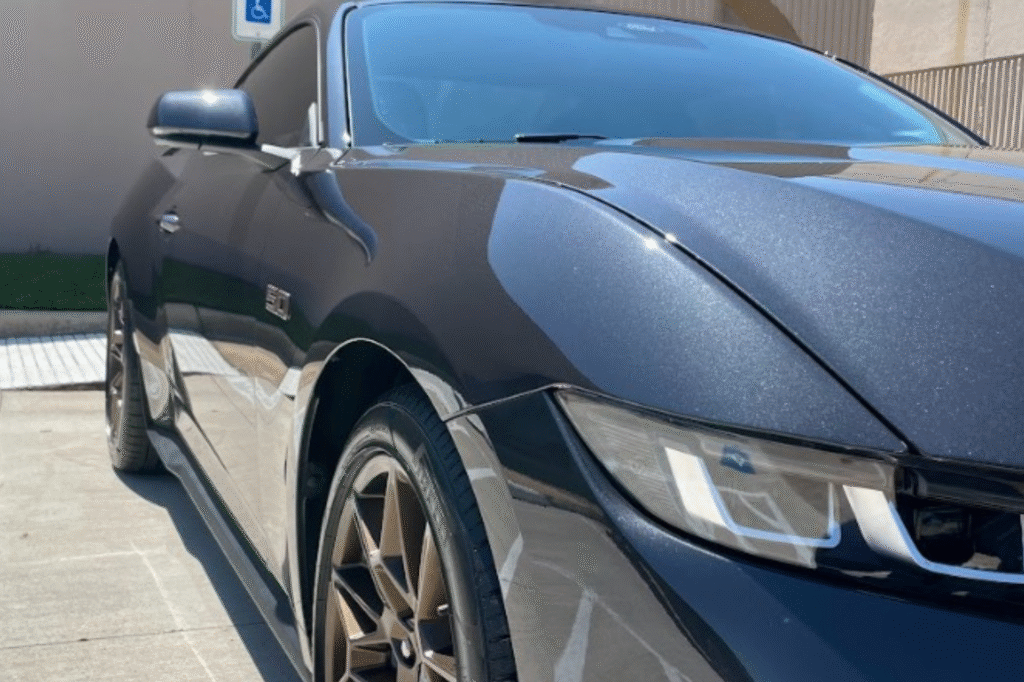Your car heats up due to a phenomenon similar to a mini “greenhouse effect.” Sunlight enters the vehicle, is absorbed by the interior surfaces, and is converted into heat. But because your car’s windows don’t allow that heat to escape easily, it stays trapped. Darker cars and dark-colored interiors absorb even more solar radiation, causing the cabin to heat up faster. If your ventilation system isn’t working properly, hot air can’t be expelled, intensifying the discomfort. Even on a mild day, a parked car exposed to direct sunlight can quickly reach extreme interior temperatures. By understanding how sunlight, materials, and ventilation work together, you can take steps to manage interior heat and stay more comfortable on the road.
Key Takeaways
- Sunlight entering your car is absorbed by interior surfaces, leading to heat buildup due to the greenhouse effect.
- Darker cars and interiors with materials like leather tend to absorb more heat, increasing internal temperatures.
- The lack of ventilation or a faulty air conditioning system can prevent heat dissipation, exacerbating the heat inside.
- Direct exposure to sunlight can cause rapid and extreme temperature increases inside your car.
- Even on cooler days, the car’s windows trap heat, contributing to the rise in internal temperature.
Understanding the Greenhouse Effect in Cars
While the greenhouse effect is most often associated with global climate patterns, it’s also the primary reason your vehicle heats up so quickly. This natural process begins when sunlight, in the form of short-wave energy, passes through your car’s windows. Once inside, it’s absorbed by the dash, seats, and other surfaces and is then re-emitted as long-wave energy.
However, long-wave radiation has a harder time escaping through glass. As a result, heat accumulates and remains trapped inside your vehicle, creating a sauna-like environment.
Certain variables can worsen this effect. Vehicles with darker exteriors tend to absorb more sunlight than lighter ones. Similarly, if your car’s ventilation system isn’t functioning efficiently, the trapped air can’t be circulated out, leading to rapid temperature increases.
Understanding these elements gives you the knowledge to take simple, proactive steps to reduce interior heat and improve driving comfort.
Role of Car’s Interior Materials
Your car’s interior materials significantly impact how hot the cabin gets. Leather, vinyl, and certain plastics absorb more heat compared to cloth or other lighter materials. Leather, in particular, retains heat and can make seats uncomfortable to the touch.
Color matters, too. Dark-colored surfaces absorb and hold more heat, while lighter materials tend to reflect sunlight, helping to reduce the overall temperature. This effect is especially noticeable on the dashboard, where the black trim can radiate intense heat after exposure to direct sunlight.
Insulation also plays a role. Cars with low-grade or insufficient insulation allow more heat to penetrate the interior. Additionally, a poorly designed cabin layout may limit airflow, further contributing to trapped hot air and reduced comfort.
Drivers interested in long-term vehicle preservation often explore solutions like car window tinting to reduce this temperature buildup and protect interior surfaces from sun damage.
Impact of Sunlight on Car Temperatures
Parking your car in direct sunlight dramatically increases the internal temperature. Sunlight enters through your windows and heats the interior surfaces, seats, steering wheel, and dashboard. These surfaces then radiate that heat into the surrounding air, raising the cabin temperature.
Because car windows trap this radiant heat, it continues to build up with nowhere to go. Even when it’s only moderately warm outside, your car can become dangerously hot in a short amount of time.
Sun intensity and car color play major roles. A car parked in direct sunlight on a 90°F day can see its interior climb above 135°F within just 90 minutes. Dark-colored vehicles absorb more sunlight than light-colored ones, causing quicker heat buildup.
One effective solution many locals rely on is window tinting Arlington TX. Quality tint reduces heat penetration and helps maintain a cooler, safer driving environment.
Importance of Ventilation System
If your vehicle feels overwhelmingly hot even after starting it up, your ventilation system may be underperforming. This system is responsible for regulating airflow and managing cabin temperature, and when it’s working properly, it keeps you comfortable even on hot days.
Efficient ventilation systems move hot air out of the cabin and bring in cooler outside air or cooled air from the air conditioning (A/C) system. If the components, such as the blower fan, compressor, or filters, aren’t functioning well, that airflow is restricted.
Without proper ventilation, heat lingers inside the vehicle, compounding the greenhouse effect. The result? A hotter and more uncomfortable ride.
Inadequate ventilation not only affects comfort but also poses health risks, such as dehydration and heatstroke, especially for children and pets. High heat can also damage interior components, causing dashboard materials to warp, crack, or fade over time.
Effective Ways to Cool Your Car
Now that you understand the role ventilation plays, you may wonder how to reduce heat in your vehicle effectively. Start with a simple strategy: park in shaded areas whenever possible. Avoiding direct sunlight significantly reduces interior heat.
If shade isn’t available, use reflective sunshades on the windshield and rear window. These tools block sunlight before it enters the car, minimizing heat accumulation.
Another proven solution is adding professional-grade tint. For many in the area, Arlington window tint installations help keep interiors cooler and more comfortable while enhancing privacy and reducing UV exposure.
In addition to blocking heat, tint helps prevent interior fading and cracking over time. Combine this with regular A/C maintenance, cracked windows for airflow, and parking strategies, and your car becomes much more comfortable in the summer months.
Common Myths About Car Heat
There are several persistent myths about car heat that need clarification.
One myth is that cracking your windows significantly cools down the car. While it does allow minimal airflow, it doesn’t prevent temperatures from rising to dangerous levels, especially under direct sunlight.
Another misconception is that running your air conditioner will overwork your engine and cause it to overheat. Modern vehicles are engineered to handle the additional load of air conditioning. If overheating happens, it’s usually due to mechanical issues unrelated to the air conditioning system.
Many believe darker-colored cars heat up much faster than lighter ones. While dark surfaces do absorb more solar energy, the interior temperature difference between dark and light cars is smaller than often assumed.
Lastly, there’s a common belief that leather interiors are always hotter than fabric. Both materials can become hot under sunlight. However, leather may feel more intense to the touch because of its surface texture and heat retention.
In Summary
You now have a clearer picture of why your vehicle gets so hot inside. The greenhouse effect, interior materials, sunlight exposure, and ventilation efficiency all contribute to this heat buildup. While you can’t control the weather, you can take smart steps, like using sunshades, parking wisely, and maintaining your A/C to keep your car cooler.
At Ceramic Pro Arlington, we specialize in professional window tinting services tailored to combat heat and protect your vehicle’s interior. Whether you’re looking for advanced ceramic coatings or expertly installed tint, our solutions offer long-lasting performance and peace of mind.


